Growing Sweet Peas: Get a Head Start with Autumn Planting
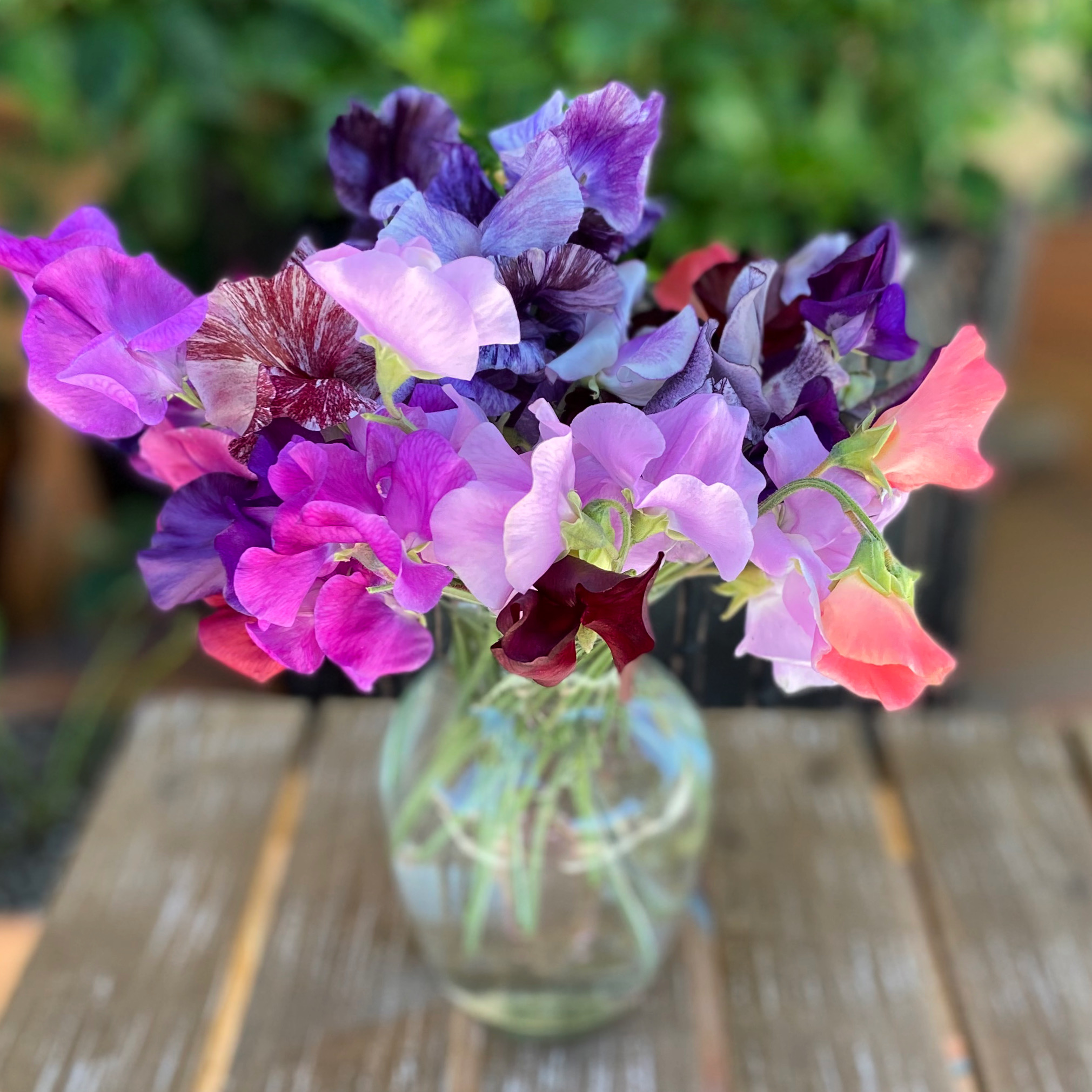
Planting sweet peas in autumn may seem counterintuitive, but it is the best way to get a head start and ensure success if you live in an area that experiences hot summers. Sweet peas hate the heat and quickly peter out when temperatures are in the 90’s and above. Growing sweet peas in autumn gets your plants way ahead of the game and blooming in early spring before that darned heat arrives! Please remember, all parts of the sweet pea plant are toxic.
Disclaimer: when you shop through my affiliate links I earn a small commission which helps me create more content, at no additional cost to you! Thank you so much for your support!
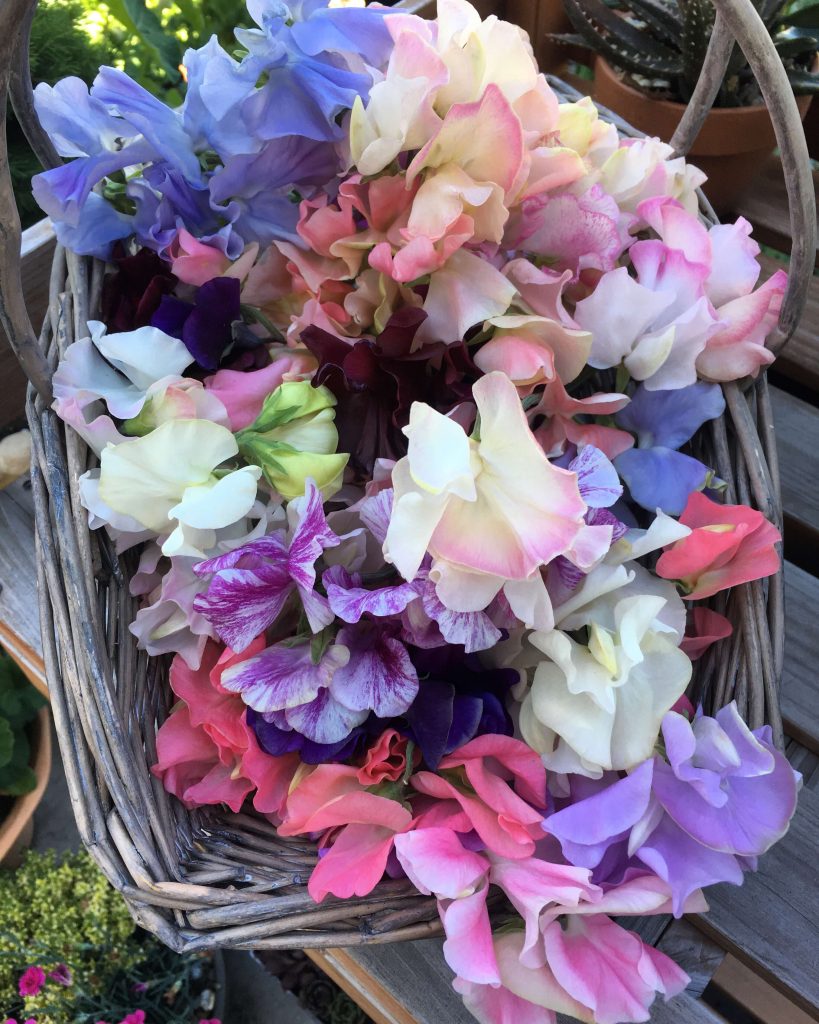
Which Climates Should Plant Sweet Pea Seeds in Autumn?
I recommend autumn planting for gardeners growing sweet peas in zones 6 and above. If you live in a climate where winter lows dip no lower than the teens and twenties, then autumn planting is for you! I have personally had success with this method in zone 6b (Utah) and 8b (California). Both of these climates experience very hot summers so having plants already growing, with robust root systems several months old, gives you an amazing head start come spring. When I lived in zone 5a (Idaho) the sweet peas grew happily in the much cooler summers, so I had success planting them in late winter/early spring and autumn planting was unnecessary.
Steps for Planting Sweet Peas in Autumn
Choose the Pots
Planting your sweet peas in autumn couldn’t be easier. I always plant them in pots in case temperatures dip super low and I need to pop the seedlings into the garage for protection. Choose pots that are on the deeper side to accommodate the long sweet pea roots. I reuse Proven Winners pots that are about 5 inches deep by 4 inches across, commonly called quart sized pots. These ½ gallon sized pots would also work great. Root trainers are becoming better known in the general gardening world. I have used root trainers in the past, but not in an overwintering situation where the plants are sitting in them for months. By the time I plant in spring, the roots have filled the quart sized pots so I don’t think root trainers would provide sufficient room.
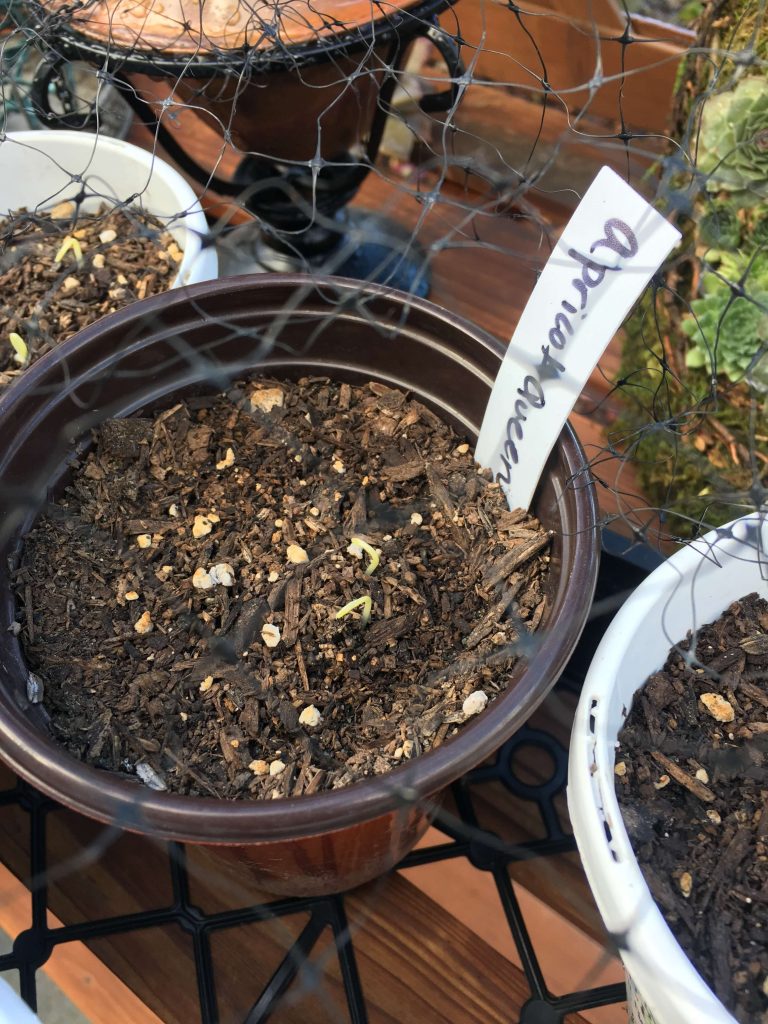
Plant the Seeds
Fill the pots with an all-purpose potting mix. I use Fox Farms Ocean Forest. Do not use anything labeled “seed starting mix”. The sweet pea plants will be growing in the pots for several months so you need a potting mix that has plenty of nutrients and excellent drainage. Seed starting mix is often sterile to discourage fungus and damping off issues and it will not feed your plants while the roots are growing over winter. Gently press the soil down, leaving a half inch lip. Once your pots are filled, water them in well. Watering beforehand keeps the seeds from dislodging after you have planted them. Place three seeds (sometimes only one or two will sprout) in each pot and push them down one inch, backfilling the hole made with your finger. Leave them in your garage and wait. Only water if you see the top of the soil starting to dry out. Fresh seed will sprout in seven days and older seed will take 14 days to even a month. I do not soak, file, or chip the seeds in any way. I have just not found it to be necessary. If this method makes you nervous, check out my pre-sprouting method HERE which allows you to watch the seeds as they sprout and then pot them up. Do not thin out the seedlings. All three will grow together and support each other. If you are wondering where to purchase sweet pea seeds check out THIS POST.
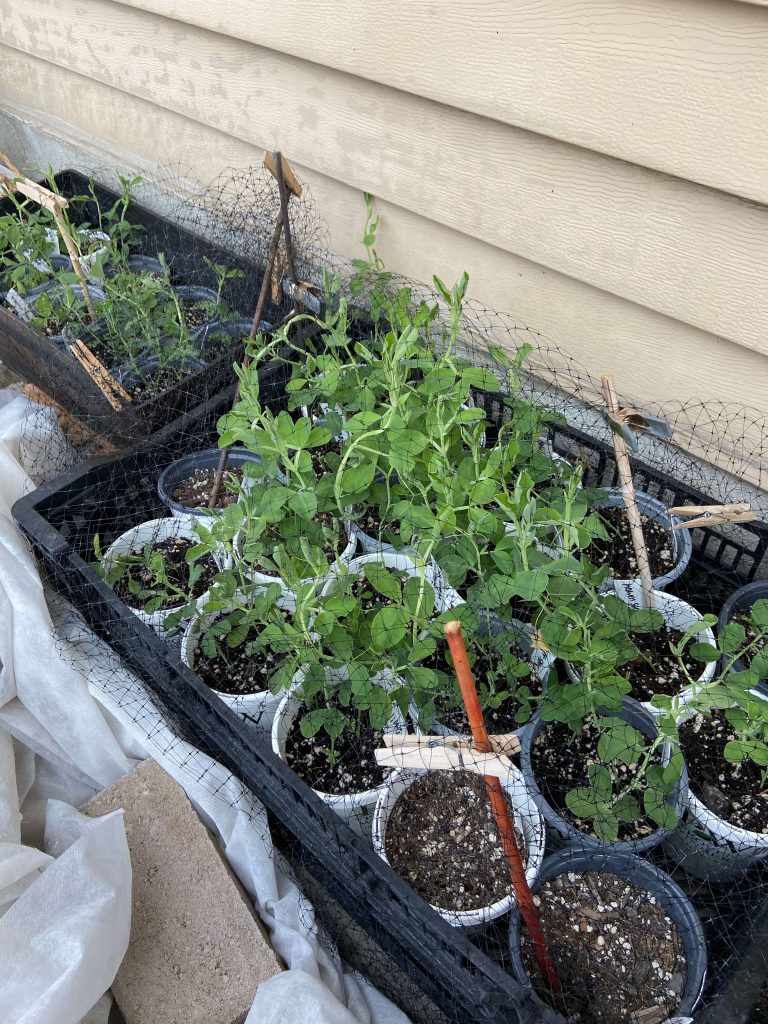
Choose the Location
Once most of the pots of sweet peas have sprouted and are starting to grow leaves, move them outside to the spot where they will spend the winter. All you need is a sunny spot nestled alongside your house. Try to find a spot with at least 8 hours of sunshine. I like to grow the sweet pea seedlings along the house because it will release warmth in the evening and I don’t have to walk far on freezing days to check on the plants. I also love this method because you don’t need grow lights, and you don’t need to take up room in your house. We are not growing spindly indoor sweet peas, we are growing strong stocky plants that can take the elements!
Set up Protection
You must protect your sweet pea babies from critters. Everyone has birds, so at the very least you will need to cover them with bird netting. Make sure that the netting is not resting directly on top of the plants by either using some kind of hoop or sticks to attach the netting. As you can see in the picture below I was not vigilant and the sweet peas grew through my netting. That was a big mess to untangle come planting time. I have heard that mice really love baby sweet peas so if you have mice issues you should have some finer mesh protection in place. This would apply to rabbits and squirrels as well. You will also need frost cloth to throw over the plants once winter really gets underway in the colder zones. In zone 6 I kept the frost cloth on most of winter, but in zone 8 or higher it really isn’t necessary.
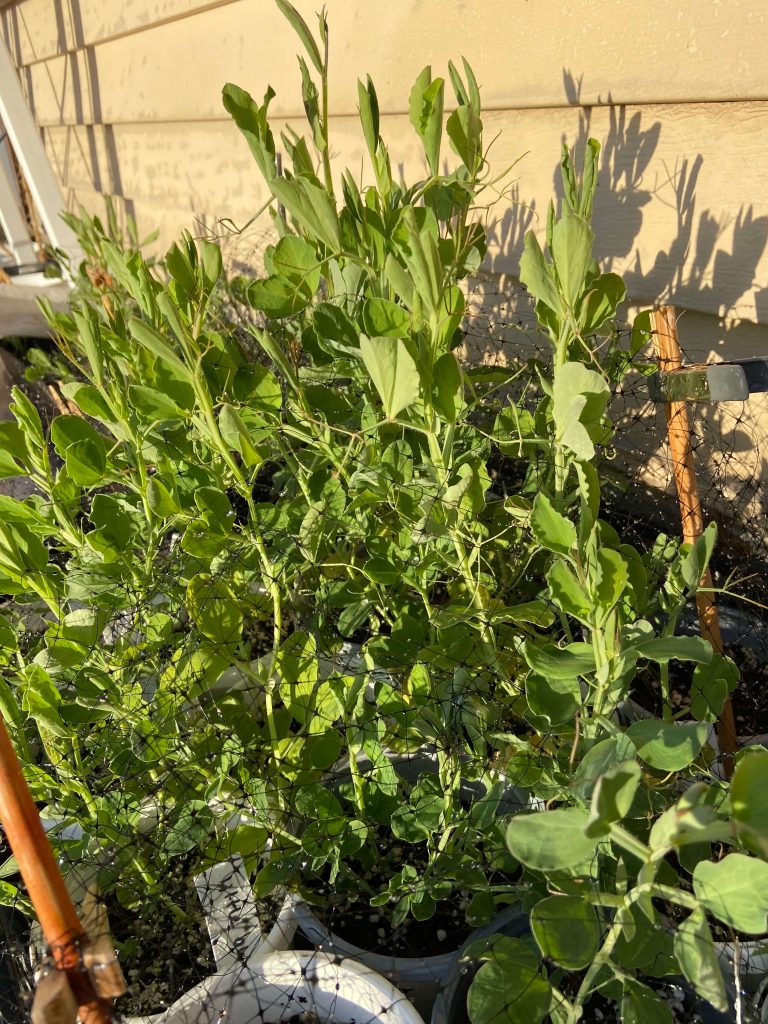
Caring for the Seedlings
Check your sweet pea plants weekly. If you don’t experience any precipitation they will need watering. Remember that it is often drier close to the house where rain cannot reach because of eaves or patios. Feel the soil and water when the top half inch feels dry. If they start growing long and spindly you can pinch them back. They will likely not grow much top growth but will be busy growing strong roots. As the weather warms you may need to remove the frost cloth during the day, but don’t forget to cover the plants back up at night. If the foliage starts to look a bit pale and it is not yet time to plant them in their final home, provide some fish emulsion fertilizer. I love THIS ONE.
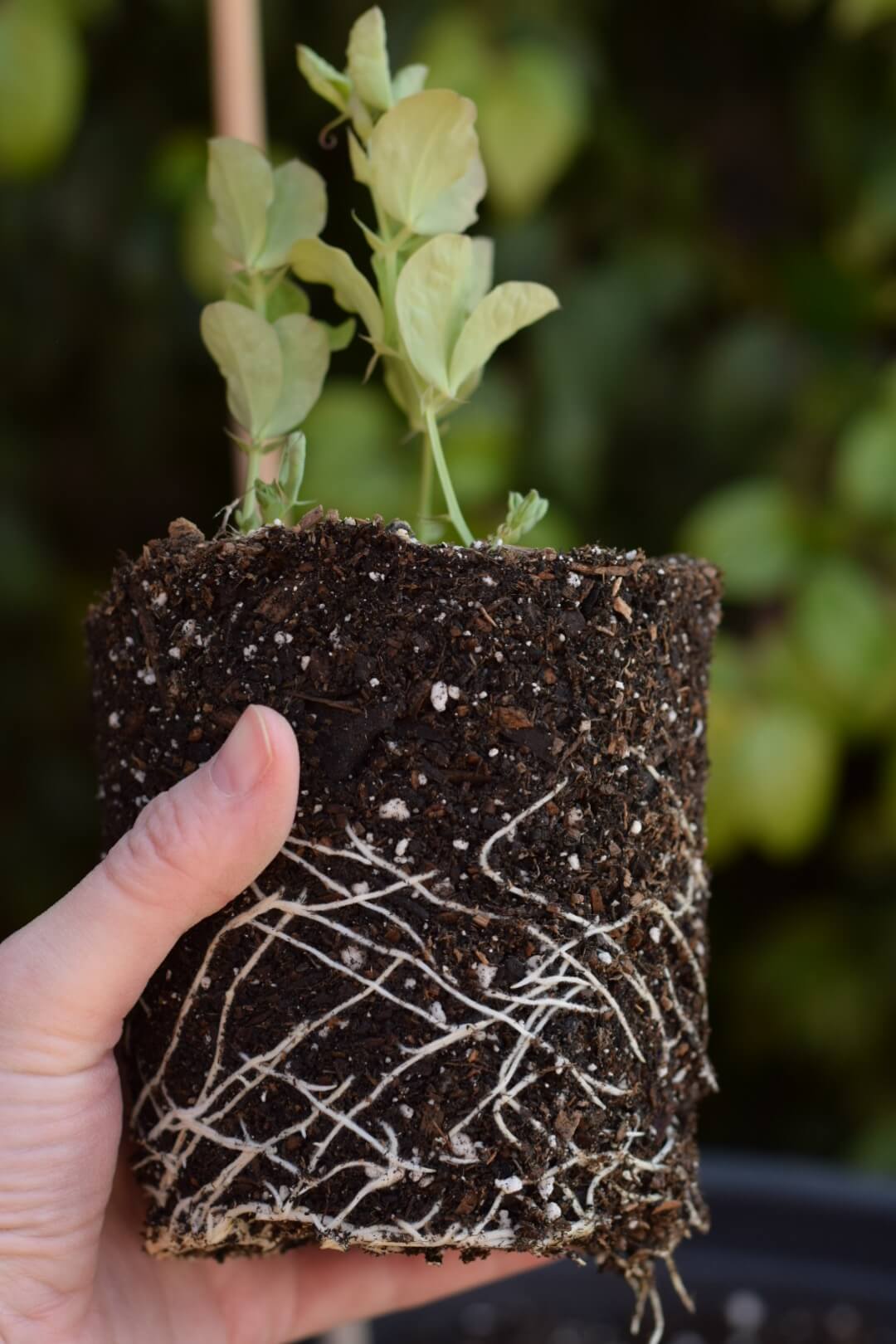
Planting the Seedlings
Plant your sweet pea seedlings into their final home no later than the end of March. If you live in a warmer zone you can do this earlier but colder zones may need to wait until you are fairly sure that temperatures will not drop into single digits. I grow my sweet peas in containers. Check out THIS POST for instructions on how to plant the seedlings into large pots.
Thanks for reading and I hope you found this article helpful! I would love to connect with you on Instagram!
Happy Gardening,
Heather
Related Posts
How to Easily Grow Beautiful Zonal Geraniums from Seed
When I discovered how easy it is to grow beautiful zonal geraniums (Pelargonium hybrids) from…
08/01/2023How to be Successful Growing Anemones in Pots
Anemones (Anemone coronaria) are one of my favorite flowers to grow in pots for a…
12/06/2022


Leave A Comment